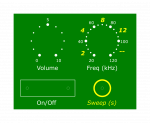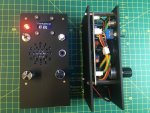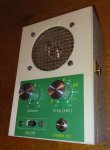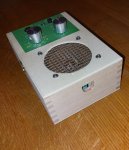kranenborg
Senior Member
While preparing for the design of the wooden box I came by a very useful tool combo for defining the control panel and the knob scales on it, and I can really recommend it for use. The main tool that I use for the panel design is InkScape (a modern, open-source vector-based drawing program) for SVG documents. As InkScape allows extensions, I used the "Knob Scales" extension for rendering them: GitHub - leechwort/knob-scale-generator: Inkscape extension for generation of knob scales (this link includes installation instructions). I made two scales as part of the panel design, which has the following looks:

PS1: For me the extension did not work properly for InkScape 1.2, therefore I installed InkScape 1.1 instead.
PS2: SVG files cannot be attached in this forum, send me a PM instead in case of interest.
/Jurjen

PS2: SVG files cannot be attached in this forum, send me a PM instead in case of interest.
/Jurjen
Last edited:



